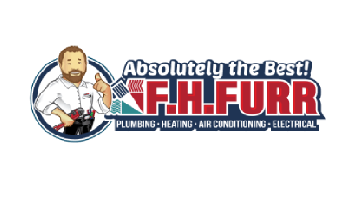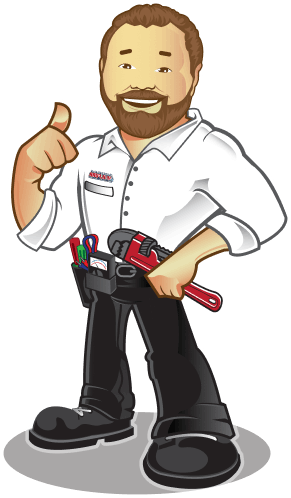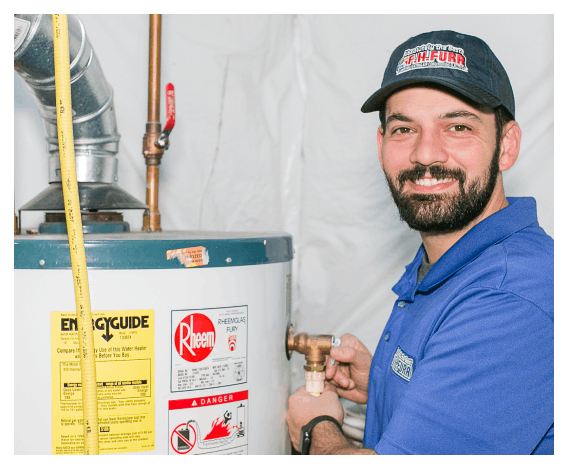It’s mid September, your kids are back in school, and the routine is just starting to feel normal again. Still, there’s one annual routine we know you’d rather do without: your seasonal allergies! You can use over-the-counter allergy medications combined with home maintenance tips to make your house a safe haven from the pollution outdoors!
Although most sufferers think their allergies are purely spring culprits, many allergens are actually heightened in the fall!
So as you get set to enjoy crisp autumn air and colorful leaves, we’ve got a few steps you can take to avoid distracting allergy symptoms!
What are normal symptoms of fall allergies?
- Runny nose
- Watery eyes
- Sneezing
- Coughing
- Itchy eyes and nose
- Dark circles under the eyes
If you’ve had any of these common symptoms lately, you’re probably experiencing fall allergies.
How can I treat my allergies?
Simple over the counter medications can help when treating allergies year round:
- Steroid nasal sprays – reduce inflammation in your nose
- Antihistamines – help stop sneezing, sniffling, and itching
- Decongestants – help clear mucus out of your nose
- Antihistamine eye drops
- Immunotherapy in the form of allergy shots or oral tablets or drops
Household tips to manage symptoms
- Stay indoors with the doors and windows closed when pollen is at its peak (usually in the mornings). Check pollen counts in your area.
- Before turning on your heat for the first time this season, clean your heating vents and change the filter. Bits of mold and other allergens can get trapped in the vents over the summer and will fill the air as soon as you start the furnace.
- Get your ducts cleaned. Ductwork can be a breeding ground for allergens!
- Use a HEPA filter in your heating system to remove pollen, mold, and other particles from the air. These are designed specifically for allergy prone homes.
- Use a whole home humidifier to maintain a level humidity in the air. As cool air approaches, the dryness will create new waves of dust mites, while giving you a scratchy throat and nose.
These tips can be a lifesaver when it comes to seasonal allergies. Stay ahead of the curve and brace yourself for the fall!
Question Submitted by Angie L. Gainesville, VA: “How do I change my HVAC air filter?”
Maybe it started out feeling a little stuffy, so you turned the A/C up higher…then you noticed that after a couple of hours, it still stayed at a balmy 74 degrees. You didn’t panic. You turned to the “Google machine” and looked up the most common reasons for A/C problems. Then you found it, what you hoped could be the potentially easy solution to your personal sauna! You thought to yourself, “It says here that changing the filter in my HVAC unit will improve airflow…when was the last time that thing was changed?” If you’re new to this, don’t worry — we’ve got you covered!
Here’s a step-by-step guide to replacing your HVAC air filter, and you’ll be glad to see that this is one of the easier fixes you’ll come across in your quest for home comfort!
Step 1: Buy a new filter
As a first-time filter replacer, you’ll need to buy a filter that fits your system’s requirements. Before you head out to make the purchase, you can read through your owner’s manual or just take a look at the current filter in your system. The specifications should be printed on the side of the frame so it’ll be easy to find what you need. You should be able to find filters at your local hardware store, Wal-Mart, Target and even some varied grocery stores. You can even get higher-efficiency filters that work better and last longer.
Step 2: Turn off your unit
After you’ve got the correct filter and are ready to replace the old one, you’ll want to turn off your heating and cooling unit. This is for safety purposes. Unit settings vary, so take a look at your user manual if the on/off switch isn’t visible. At the very least, simply switch off your breaker…just remember to turn it back on again!
Step 3: Remove the old filter
This can be a pretty gross thing to see if you haven’t changed filters in a few weeks or even months. You’ll be surprised how much dust, dirt and debris your filter has caught! Most system’s air filters are located on the right side of the unit. You’ll see the square filter, and it should easily pull out of its slot in the furnace. It’s fairly uncommon, but if you’re one of those whose filters are located in the air vents of your home, you’ll probably need to contact the professionals at F.H. Furr to replace your filter.
Step 5: Inserting the new filter
Here’s the easy part! Simply slide the new filter into the slot that the old one came from. Follow the arrows that are on the outside of the filter in order to see which end goes in first and what side should be facing where.
Now that you know how to change your filter, be sure that you change it every few months and sometimes more if you notice that they’re pretty dirty when you replace them. Changing your air filters can save between 5-15% of your energy bill each month. They also help your system operate smoothly and increase HVAC life. In short, air filter replacement is an easy way to maintain your home’s comfort! As always, when you need tips, services and professionals you can rely on, count on the technicians at F.H. Furr! Give us a call today to find out more about our heating and cooling services, deals and inspections!
Is your home sticky and hot? We might just have the perfect solution for Northern Virginia homeowners!
As you enter the month of June, you know your home will become the hangout for family cook-outs, get-togethers for the kids, and the usual area of relaxation that you come back to at the end of every day. But what if the air inside the house is sticky and hot? Turning the air conditioning down to an extreme low is an expensive solution. Well, as a means of escape, we all know that restaurants are freezing, so you might want to start eating out more.
Hold it…
You don’t have to go to extremes to get improved indoor air quality! You can maintain your home’s cooling by having a Whole Home Dehumidifier installed! Many homeowners don’t realize that excessive humidity can cause their homes to feel far more uncomfortable than if their humidity was regulated. Managing the humidity level in your home can help you maintain a cool, even temperature.
How Do They Work?
Dehumidifiers eliminate that clammy feeling that you get when your home is overly humid, you’ll find that there’s a noticeable difference in the way you feel. Dehumidifiers work to minimize stifling moisture by pulling air through a fan unit and pushing it through the machine’s coils, pulling moisture and locking it away, sending the regulated air back into the home. This means using your cooling system less and saving more!
Did You Know:
The ideal level of humidity in the home is 45%. During the summer, this percentage jumps due to the high levels of humidity in the Northern Virginia area. When you ignore that excessive humidity and turn up the A/C to compensate, you’ll cause your utility bills to soar. When you install a Dehumidifier, it regulates the air, creating a more balanced environment while minimizing contaminants like mold and mildew.
Your home might need a whole home dehumidifier if:
- You see condensation on the window, mirrors, and cold drinks
- You notice more insects than usual in your home
- Wood floors, trim, or furniture warp or rot
- You experience abnormal sweating or high indoor temperatures
- Bedding feels moist
- Skin feels sticky and clammy
- Rooms smell musty
Have one of our trained technicians come out to your home and assess your humidity levels. They’ll be able to give you advice and options on how to cool your home efficiently and let you know if a dehumidifier is right for you! To learn more, give us a call! We’re always here to answer your plumbing, heating, cooling, and electrical needs!
You don’t have to know all about HVAC to recognize the importance of your home’s air quality. If you suffer from allergies, asthma, or illness, you might have poor indoor air quality! For those of you who can’t stand that musty, choking feeling, let us educate you on one of the prime culprits of poor indoor air: your air ducts! Yes indeed, the ducts that circulate hot and cool air in your home can cause all sorts of breathing problems. To prevent unhealthy air circulation throughout your home, a duct cleaning is your next move for healthy, breathable air! Read on to find out more about air duct cleaning!
What is Duct Cleaning?
Heating and cooling systems become contaminated over time. Water deposits and an accumulation of dirt or mold could be causing poor air quality inside your home. In addition, ducts can become infested with insects or rodents. Duct cleaning removes the buildup and cleans the internal components of your heating or cooling forced air systems.
Why Should I Have My Air Ducts Cleaned?
1. Mold
If your system contains visible mold, this is a sure sign that it is time to contact an HVAC technician. In fact, mold that you can see could be an indication that there is mold elsewhere as well. It is necessary to have a trained professional inspect those inaccessible areas.
2. Infestation
Most likely one of the nastiest parts of dirty ducts is the fact that they are often infested with parasites, rodents, and all sorts of creepy-crawlies! Keeping those out of your airways is in the best interest of everyone in your home!
3. Dust, Debris and Allergens
A buildup of particles may potentially be released into your home through the heating/cooling system, causing you health concerns and a generally uncomfortable breathing environment. An overload of dust in the home is a sure sign that your ducts are packed with debris.
4. Improved HVAC Function
Your heating and cooling system will suffer when your ducts are filled with dirt and particles. It needs to work harder to deliver the air into your home, making it more costly as well. Clean ductwork will help you receive cleaner air in every room of your home with efficiency!
What Can I Do Between Cleanings?
1) Change your filters every three months; if they are frequently backed up, you may want to change them more frequently.
2) Dust and vacuum on a regular basis.
3) If in-duct humidification equipment is contained in your system, be sure to follow your manufacturer’s specific guidelines regarding operation and maintenance
As always, F.H. Furr is eager to serve you. Don’t hesitate to pick up the phone with any questions or concerns regarding your air ducts! We have been, and will continue to be, “Absolutely the Best” in home comfort, that’s a guarantee!
3 Things To Know About Carbon Monoxide Poisoning!
When it comes to carbon monoxide, most homeowners realize that it can be deadly when inhaled, but many don’t know what signs to look for in their home. When protecting your family against carbon monoxide poisoning leaks, it’s imperative that you know the facts. So let’s dig a little deeper!
1. What are the signs of carbon monoxide poisoning?
Since carbon monoxide is colorless and odorless, it’s difficult to know when it’s being emitted into the air. That’s scary! So look for the signs. The most common symptoms of CO poisoning are headache, dizziness, weakness, upset stomach, vomiting, chest pain, and confusion. Symptoms of carbon monoxide poisoning are said to feel very much like a bad flu. Breathing in these fumes can be lethal and especially dangerous at night when sleeping victims don’t wake up to the signs.
2. Is carbon monoxide poisoning dangerous for everyone?
Unfortunately, everyone is at risk when CO poisoning is involved, although infants, the elderly, people with chronic heart disease, anemia, or breathing problems are more likely to be affected. Sadly, each year over 400 Americans die from unintentional CO poisoning.
3. How can I prevent CO poisoning in my home?
This is certainly the most important question to ask. Prevention is the key to safety from carbon monoxide poisoning. Here are some simple ways to keep it OUT of your home!
- Install a carbon monoxide detector. Like your smoke detectors, you should remember to change the batteries every spring and fall.
- Have your HVAC system, water heater, and any other gas, oil, or coal-burning appliances serviced and maintained by a professional annually. F.H. Furr’s inspections can cover this.
- If you smell an odor from your gas refrigerator, have a professional come take a look. Odors like that can be signs of a carbon monoxide leak.
- Make sure your gas appliances are vented properly. When having a professional like F.H. Furr inspect your home, you’ll be able to be sure that these areas are covered.
- Never patch a vent pipe with tape, gum, etc. This kind of DIY fix can cause carbon monoxide buildup in your home.
- Never burn charcoal indoors; it gives off dangerous CO fumes.
- Avoid using a generator inside your home, basement, or garage or less than 20 feet from any window, door, or vent.
For more tips on how to prevent carbon monoxide poisoning, give us a call and schedule a technician to inspect your home. Your furnace and other equipment could be emitting fumes into your home without you even realizing it! Don’t let it happen to you! Contact us for assistance today!
We hope you’ve had a relaxing weekend and are getting a great start on your Monday routine. With the beginning of July right around the corner, we know you’ve been pumping your home’s air conditioning to combat this summer heat! Not only is July a month characterized by its heat, it’s also a patriotic month! The 4th of July is a time to celebrate freedom, and we all know that family will gather together to enjoy this holiday…possibly at your home. If this is the case, you’ll want to be sure your A/C is pumping full force! If you anticipate a house full of guests on the 4th, or for seasonal bar-b-q’s in general, then get ready to maintain that HVAC like we’ve discussed in our HVAC Maintenance Series. If you’ve already gotten our inspection, then you’ve noticed the savings on your monthly bill!
If you’ve seen savings, you’re probably wondering how you can increase them! During our HVAC Maintenance blog series, we’re giving you tips on how you can save on your HVAC every day. Consider an air filter replacement!
“Did You Know”
Replacing your HVAC air filters can increase your home’s efficiency by up to 15%
A clean filter can make a huge difference on your energy bill. When your filters are cluttered with dust and debris, your HVAC system is forced to work harder, making the efficiency in your home suffer drastically. The great part about changing your filters is that it’s simple! No need to call in a professional for this one, replacing your filter is something that you can do on your own! In fact, you can save even more when you switch to a high efficiency filter! There are all sorts of ways to save energy and money on your home’s HVAC, and replacing your filters regularly is one of the easiest methods.
Not only will you notice a change in your energy bill, but you’ll notice your A/C pumping stronger for longer, this summer!
As always, give us a call to learn more about savings for your HVAC system. Maintaining your heating and cooling is the most efficient way to save. Have one of our technicians come to your home to give you helpful suggestions about ways you can be more energy aware and save money on your bill each month!
Question submitted by Jordan B. of Great Falls, VA
Jordan, as we enter the summer months, we foresee our homes become the hangout for family cook-outs, get-togethers for the kids, and the usual area of relaxation that we strive for them to be. But if the air inside the house is sticky and hot, turning the Air Conditioning down low, as some would suggest, is an expensive solution. You want to know how you can make your home cooler without bumping up the A/C? We’ve got the solution for your sticky, stifling home.
You don’t have to go to extremes to get cool air that isn’t stuffy in your home! You can maintain your home’s indoor air quality by installing a Whole Home Dehumidifier! Many homeowners don’t realize that excessive humidity can cause their homes to feel more uncomfortable than they should. Managing the humidity level in your home can help you maintain a cool, even, temperature.
The ideal level of humidity in the home is 45%. During the summer, this percentage jumps due to the high levels of humidity in the Northern Virginia area. Ignoring excessive humidity in your house and opting to turn up the A/C will cause your utility bills to soar. When you install a Dehumidifier, it regulates the air, creating a more balanced environment while minimizing contaminants like mold and mildew.
Dehumidifiers eliminate that clammy feeling that you get when your home is overly humid, you’ll find that there’s a noticeable difference in the way you feel. Dehumidifiers work to minimize stifling moisture without having to lower your home’s temperature. This means using your cooling system less and saving more!
Your home might need a whole home dehumidifier if:
- You see condensation on the window, mirrors and cold drinks
- You notice more insects than usual in your home
- Wood floors, trim, or furniture warp or rot
- You experience abnormal sweating or high indoor temperatures
- Bedding feels moist
- Skin feels sticky and clammy
- Rooms smell musty
Jordan, have one of our trained technicians come out to your home and assess your humidity levels. They’ll be able to give you advice and options on how to cool your home efficiently, and let you know if a dehumidifier is right for you! To learn more, give us a call! We’re always here to answer your plumbing, heating, cooling, and electrical needs!
It’s fall! The weather is gorgeous, the leaves are beginning to change, and being outside is a must! But why are you still sneezing like it’s the first day of spring? Unfortunately, fall allergens are different from those in the spring. While both seasons can affect many people, some may suffer from allergies in the fall but not in the spring, and vice versa. They can cause sneezing, coughing, itchy and watery eyes, runny or itchy nose, and dark circles under the eyes. So let’s dig a little deeper to discover the root of these fall allergies and find out how to relieve them.
What Causes Fall Allergies?
The most common trigger of fall allergies is ragweed. This yellow, flowering weed begins releasing pollen in August and can last until October. Statistics show that about three-quarters of people with spring allergies are allergic to ragweed. There is no respite from this particular plant because it travels on the wind.
Mold is another trigger during the fall when piles of damp leaves lay in your yard for weeks. Although many people think mold only exists in damp areas of your home (which can be true), it can also lurk where you don’t expect it. During the fall, when things don’t ever dry due to the lack of heat, mold can rear its ugly head.
Dust mites are generally thought of as a common summer problem, but in reality, these mites get stirred into the air the first few times you use your heat in the fall. Symptoms of dust mite allergies include sneezing, wheezing, and a runny nose.
Tips to Manage Symptoms
Here are some simple tips to manage your fall allergy symptoms and help you find some relief from these annual triggers!
- Make use of allergy medications. Whether it’s a nasal spray, antihistamine, or prescription drugs prescribed by a doctor, these medications will help.
- Stay inside! The main allergens are blowing through the air, so avoid prolonged periods outdoors.
- Maintain your yard. Due to the previous tip, it might be a good idea for family or friends who don’t have allergies to help you out with your leaves. Those dead leaves in piles breed mold, which is bad for allergies. Make sure that they are bagged and disposed of properly.
- Get a humidifier! Homes benefit from moisture in the air, and that moisture keeps allergens in check. If you constantly suffer from allergies in the spring and fall, consider investing in a whole-home dehumidifier. These products create the perfect moisture level throughout your home to keep it comfortable while cleaning the air of dangerous germs, allergens, and dust and improving indoor air quality. They also allow your home to heat and cool on a lower level, saving you money and energy!
As the fall approaches, F.H. Furr is here for all of your home and family’s Plumbing and HVAC needs. Let us install a humidifier, fix a heating system, or perform an inspection to be sure everything is in working order. Be prepared for the cold with F.H. Furr!
It’s spring! Flowers are appearing, trees are blooming, and our cars are turning yellow…wait, what’s that last part? Ah yes, the pollen has returned with spring, dousing everything in its powdery yellow substance.
For those of us with allergies, springtime can be the worst time of the year. Despite the beauty that’s growing all around us, the allergens are multiplying in the air, making the first few months of spring utterly miserable. Sneezing, sniffing, itchy eyes; pollen’s symptoms know no end!
If you’ve experienced allergy symptoms, then you know that they can ruin your spring days! When allergies hit, most of us seek the comfort of our homes to escape the outside air, yet often, the air INSIDE your home can be just as bad as it is outside.
So how can you make your home safe from seasonal allergies? Here are seven tips to help improve your indoor air quality and clear out seasonal pollen.
1. Dust and Vacuum Frequently
This may sound obvious, but this is a critical part of keeping allergens at bay! With springtime weather, windows and doors are opened more frequently, allowing pollen to enter your home and infiltrate the air.
By dusting and vacuuming routinely, you can bypass the issue of pollen becoming embedded in your carpets and avoid stirring it up while dusting. Also, using a hypoallergenic vacuum or high-filtration bag will help retain allergens better than most regular vacuums and bags that can leak allergens back into the air.
Keep up with these simple household chores, and you’ll see a decrease in springtime pollen in your home.
2. Keep Your Pets Clean!
If you’ve got pets (especially if they are regularly outside), brushing and bathing them regularly will significantly reduce pollen allergens. Pollen can hide in the coat of your animals, and without grooming your pets routinely, dander and pollen can escape into your home and irritate those in your family who are suffering from allergies.
3. Maintain Your Bedding Material
You often can’t escape your allergies, even when trying to sleep. That’s because pollen settles on everything, including your pillow. If you are a sufferer of allergies, it may be wise to purchase allergen-impermeable pillowcases for the pollen season. It’s important to wash your bedding material in hot water every week. This will get rid of any pollen that’s accumulated or has been brought in and helps you sleep easier this spring!
4. Keep Windows Closed!
This should go without saying, but we’ll mention it anyway. Keep those windows shut! The more outside air you let into your home, the worse it’ll be for those suffering from allergies. Even though the weather is beautiful, you’ll have to enjoy it from afar for a few weeks until the blooms die down.
5. Upgrade Your Air Filter
Most standard air filters only eliminate 3% to 5% of the dust particles and allergens that circulate through them. Upgrading will greatly reduce pollen and allergens that are in your home.
6. Control the Humidity in Your Home
A humidifier can be good for the elimination of allergens in the air. There are small, one-room humidifiers you can buy reasonably cheap if your allergies only last a month or so. For those of us who suffer all year long, a whole-house humidifier will greatly improve the indoor air quality of your home by keeping dry pollen out and the right amount of moisture in.
7. Maintain Your Ductwork
The ductwork in your house disperses air throughout your home, so if your ducts are leaking or not filtering air properly, you could be sending allergens and dust into the rooms of your home. It’s a good idea to make sure your ductwork is in clean, working shape before that air conditioning starts pumping!
Protecting your family from harmful allergens and improving indoor air quality are important. Try these tips this spring as the pollen count begins to rise! As always, F.H. Furr is ready to handle all of your indoor air quality needs!










